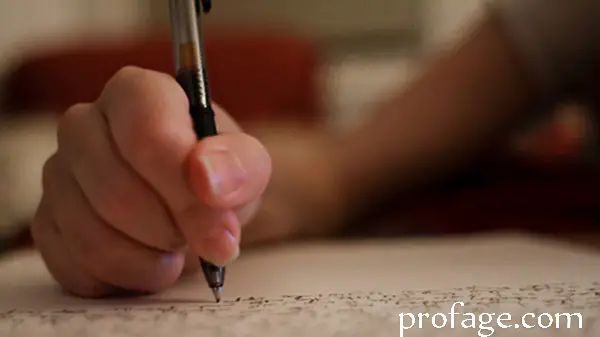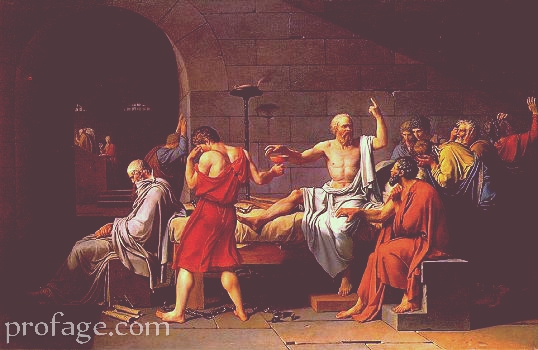Let us examine the origin, influence, and characteristic of neoclassical literature.
Neoclassical literature is a style of writing that emerged in the 17th and 18th centuries. It draws inspiration from the classical art and culture of ancient Greece and Rome. The movement was characterized by a return to classical ideals, order, and reason, and a rejection of the excesses of the Baroque period that preceded it.
The era is known for its emphasis on reason, clarity, and simplicity. It is marked by a focus on formal structure, balance, and restraint. Writers of this period often used classical themes and motifs, such as the heroic ideal, to convey their messages. They also sought to educate and enlighten their readers using literature as a means of moral instruction. So what does its origin look like?
The Origin of Neoclassical Literature
As stated earlier, neoclassical literature emerged in the 17th century, a period marked by the rise of the Enlightenment, a movement that emphasized reason, science, and rational thinking. The neoclassical literary movement was a response to the excesses of the Baroque period, which was marked by sentimentality, ornate and elaborate styles. Neoclassicism was characterized by a return to the classical models of ancient Greece and Rome. More of this in our previous article: The basic foundation of neoclassical literature.
Characteristics of Neoclassical literature

Neoclassical writers modeled their works on classical texts and followed various aesthetic values first established in ancient Greece and Rome. They believed that classical literature was the epitome of beauty, clarity, and order, and that it provided a model for literary excellence.
It was characterized by its adherence to classical forms, such as the epic, the ode, and the sonnet. The era was marked by a rigorous attention to form and structure, and by a preference for clarity and simplicity over ornamentation and embellishment (peculiar to preceding eras).
In the same vein, neoclassical writers sought to express their ideas in a clear and rational manner, using classical forms and aesthetic values as a guide. Some of these forms and values together make the peculiar characteristics of the movement. They include but are not limited to:
- Reason and Order
One of the defining characteristics of Neoclassical literature was its emphasis on reason and order. Neoclassical writers believed that literature should be guided by reason and logic rather than by emotion and imagination. They valued clarity, precision, and accuracy in language and thought.
Neoclassical literature often explored themes related to reason and order, such as the nature of truth, the role of reason in society, and the importance of rational thinking. Writers used reason and logic to create well-structured works that were easy to understand and that conveyed their ideas clearly.
- Satire and Criticism
Another prominent theme in Neoclassical literature was satire and criticism. Neoclassical writers often used satire to expose and criticize the flaws and follies of society. They used humor, irony, and exaggeration to highlight the shortcomings of individuals, institutions, and society as a whole.
Satire was often used to critique the excesses of the aristocracy, the corruption of political leaders, and the hypocrisy of religious institutions. Neoclassical writers believed that by exposing these flaws, they could encourage social reform and promote a more just and equitable society.
- Distinct Era
Another thing peculiar to the neoclassical period in literature is time. How time?
The movement, like others, has a distinct timeframe, which can be traced back to the years between 1660 and 1798—those were the years it started and ended when it first emerged, actually. This time can be further subdivided into three ages: The Restoration Age, the Augustan Age, and the Age of Sensibility.
- Didacticism
To wrap up, neoclassical literature was often didactic in nature. Its writers believed that literature should have a moral purpose and should be used to teach and instruct readers. They believed that literature could be used to promote virtue and to encourage good behavior.
Neoclassical writers often wrote works that were intended to be instructive, such as fables, allegories, and moral tales. These works were designed to teach readers important lessons about morality, ethics, and social behavior. They were often written in a clear and straightforward style that was easy for readers to understand.
Major Authors of The Neoclassical Literature Era
Some of the major authors of the neoclassical literary movement include John Dryden, Alexander Pope, and Jonathan Swift among others.

Who is John Dryden?
John Dryden was a prominent author in neoclassical literature. He was a poet, playwright, and critic who is best known for his satirical and didactic works. He was appointed as the Poet Laureate of England in 1668 and held the position until his death in 1700. Dryden’s works are characterized by his use of heroic couplets, a form of poetry that consists of two rhyming lines of iambic pentameter. He contributed greatly to neoclassical literature.
Who is Alexander Pope?
Another notable figure in Neoclassical literature was Alexander Pope. He was a poet, translator, and critic who is best known for his satirical works. Pope’s works are characterized by his use of heroic couplets, which he used to great effect in his poem “The Rape of the Lock.” He was also known for his translations of Homer’s “Iliad” and “Odyssey.”
Who is Jonathan Swift?
Finally, we have Jonathan Swift. He was a writer and satirist who is best known for his novel “Gulliver’s Travels” (something I would recommend you read). He was a master of satire and used his works to criticize society and politics. Swift’s works are especially characterized by his use of irony and satire, which he deployed to great effect in his works. He was also known for his essays and pamphlets, which he used to express his political views.
Subsequently, we would be writing elaborately on the major authors of the movement. Emphatically, nonetheless, John Dryden, Alexander Pope, and Jonathan Swift were some of the major figures in neoclassical literature. They were all masters of their craft and used their works to express their views on society and politics. Their works continue to be studied and appreciated today for their wit, satire, and literary merit.
Today? Yes, their works are being studied and enjoyed even in this age. The next subheading here will do justice to this fact.
The Revival, Influence and Legacy of Neoclassical Literature
This section examines not only the revival of, but also the impact of neoclassical literature alongside its legacy.

Neoclassical Revival
The Neoclassical movement experienced a revival in the 20th century. The revival was a reaction against the Romantic movement, which emphasized emotion and individualism. The Neoclassical revival brought back the emphasis on reason, order, and clarity.
One example of the Neoclassical revival is the works of T.S. Eliot. Eliot’s poetry, such as The Waste Land and Four Quartets, reflects the Neoclassical emphasis on reason and clarity. His works also incorporate neoclassical themes, such as the search for meaning and the struggle for redemption.
Influence on Modern Literature
The Neoclassical movement had a significant impact on modern literature. The movement’s emphasis on reason, order, and clarity influenced writers in the 18th and 19th centuries. Many writers couldn’t help but use the neoclassical style and incorporated its themes and values into their works.
One example of the influence of neoclassical literature on modern works is Jane Austen’s novels. Austen’s works, such as Pride and Prejudice and Sense and Sensibility, reflect the neoclassical emphasis on reason, order, and clarity.
Influence of the Enlightenment
The Enlightenment was a philosophical movement that sought to promote scientific inquiry, rationalism, and individualism. It emphasized the importance of reason, observation, and experience in understanding the world. The Enlightenment thinkers believed that knowledge and education were the keys to social progress and that the pursuit of knowledge should be free from religious or political constraints.
The Enlightenment had a profound impact on neoclassical literature. Neoclassical writers sought to express their ideas in a clear and rational manner, using classical models as a guide. They believed that literature should reflect the principles of reason and order, and that it should be accessible to a broad audience.
Conclusion
Neoclassical literature had a significant impact on the literary world during its time and continues to influence modern literature. Its emphasis on reason, order, and clarity influenced writers in the past and continues to influence writers today. The Neoclassical revival in the 20th century brought back these values and characteristic features, providing a counterbalance to the romantic literary age.
Share


